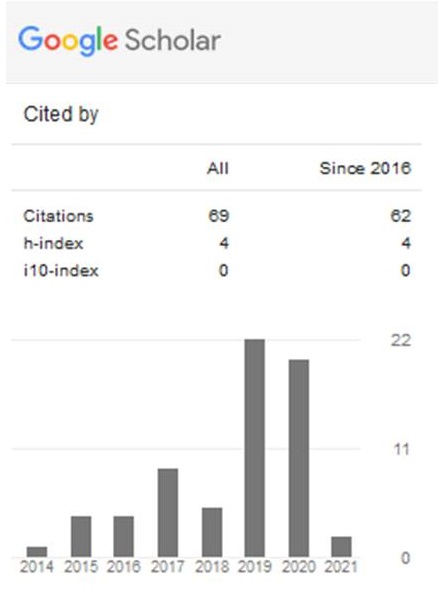Content and Effectiveness Of Kiambang Extract (Salvinia molesta) as Pre-Emergence Bioherbicide in the Control of Babadotan Weed (Ageratum conyzoides)
Abstract
Keywords
Full Text:
PDFReferences
Aristyanti, D. 2014. Pengaruh kadar kimia tanah terhadap kandungan flavonoid tabat barito (Ficus deltoidea Jack.). Skripsi, Bogor: Institut Pertanian Bogor.
Astuti, H, S., Darmanti, and S. Haryanti. 2017. Pengaruh alelokimia ekstrak gulma Pilea microphylla terhadap kandungan superoksida dan perkecambahan sawi hijau (Brassica raqa var. parachinensis). Buletin Anatomi dan Fisiologi. 2 (1) : 86-94.
Campbell, N.A., J.B. Reece., and L.G. Mitchell. 2003. Biologi. Jakarta: Erlangga.
El-Rokiek, K.G., S.A.S. El-Din., and F.A.A. Sahara. 2010. Allelopathic behavior of Cyperus rotundus L. on both Chorchorus olitorus (broad leaved weed) and Echinochloa crusgalli (grassy weed) assosiated with soybean. Jurnal Plant Prot . 50( 3) : 274-279.
Kristanto, B.A. 2006. Perubahan karakter tanaman jagung akibat alelopati dan persaingan teki." J. Indon. Trop. Anim. Agric. 31 (3): 189-194.
Management, CRC Weed. 2003. Australian Weed Management. [Januari 15, 2019].
Nithya, T.G., .J Jayanthi., and M.G. Ragunathan. 2016. Antioxidant activity, total phenol, flavonoid, alkaloid, tannin and saponin contents of leaf extracts of Salvinia molesta D. S Mitchell. Asian Journal of Pharmaceutical and Clinical Research. 9 (1).
Setyorini, S.D., and .E Yusnawan. 2016. Peningkatan kandungan metabolit sekunder tanaman aneka kacang sebagai respon cekaman biotik. Iptek Tanaman Pangan. 11 (2): 167-174.
Syakir, M., M. Bintoro., H. Agusta., and Hermanto. 2008. Pemanfaatan limbah sagu sebagai pengendalian gulma pada lada perdu." Jurnal Perkebunan dan Lahan Tropika. 14 (3) : 107-112.
Tjitrosoedirdjo, S., and E. Purba. 2006. Integrated weed management in oil palm plantations to support sustainable palm oil production. Rounstable meeting on sustainable palm oil. Singapore.
Trisilawati, O., and J.Pitono. 2012. Pengaruh cekaman defisit air terhadap pembentukan bahan aktif purwoceng. Bul. Littro. 23 (1): 34-47.
Yuliani. 2017. Formulasi dan uji efektivitas sabun cair penyanitasi tangan dengan ekstrak daun jeruk purut (Citrus hystrix) terhadap Staphylococcus aureus. Skripsi, Bogor: Institut Pertanian Bogor.
Yulifrianti, E., R. Linda., and I. Lovadi. 2015. Potensi alelopati ekstrak seresah daun mangga (Mangifera indica) terhadap pertumbuhan gulma rumput grinting (Cynodon dactylon). Protobiont. 4 (1) : 46-51.
Zhao, H.L., W. Qiang., R. Xiao., and D.P. Cun. 2010. Phenolics and plant allelopathy. Molecules. 15: 8933-8952.
Refbacks
- There are currently no refbacks.

_2017.jpg)



